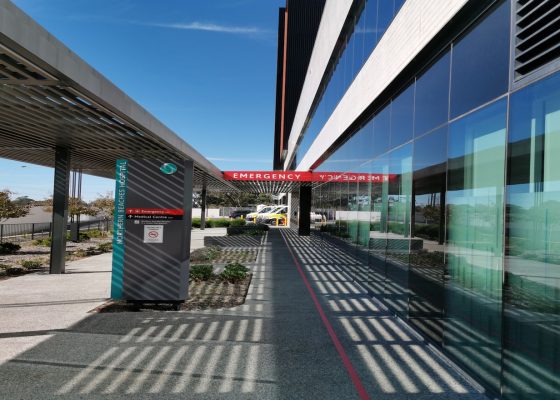Please explain to me how it makes sense for the federal government to let the private health sector continue to wallow.
God forbid I hand out praise when it’s due, but I recently had a stay in a Ramsay Health Care-operated private hospital in Brisbane, and everything about it – well, almost everything – was excellent.
Pre-admission process – online and simple. Admission process – smooth, friendly and efficient. Pre-op process – fast, efficient and excellent nursing. Theatre crew – brilliant, friendly, communicative, don’t even remember falling asleep. Recovery process – smooth and trouble-free. Post-operative care in the cardiac care unit (CCU) – immaculate, friendly, efficient, and well communicated. Discharge process – quick and efficient, thanks to the night nurse looking after the pharmacist’s needs the night before.
Done and dusted. Well done all at the Greenslopes Private, thank you very much.
Here at HSD we are, of course, all about the digital-ness of everything health. Interoperability is our middle name.
How did Greenslopes Private do? From the patient and family point of view – excellently. The patient tracking system worked a treat.
Every time I changed room a nurse scanned my wristband – “just updating your insta” – and my partner received a text message telling her where I was and what was happening next. She walked into my CCU room three minutes after I was rolled in.
Now I can only speculate on the digital capabilities of the CCU because I wasn’t really there long enough to see much, but yes, there was the ubiquitous paper file, with endless plastic tags and removable pages, but nobody seemed too troubled by it all.
What wasn’t excellent? Second-worst scrambled eggs ever eaten. But then it was a CCU, so perhaps the food is designed to be awful.
So whatever else can be said about Australia’s private hospital sector – and goodness knows, there’s been plenty said this week (here, here, and here) – it’s hard to fault the quality of the care, and that’s a testament to the professionalism of staff working often under duress.
With the possible exception of Northern Beaches Hospital which is long overdue for a serious investigation and rethink, I’d be happy entrusting my care to an Australian private hospital. All power to them.
Financially speaking, as a private health member, it was a rosy, rosy picture.
Total cost to my insurance fund for a 28-hour stay and all it entailed – $23,354. Total cost to me – my $250 excess, and $500 for the anaesthetist.
Does that represent value money? On face value, of course it does.
I currently pay close enough to $400 a month to my insurer.
So my 28-hour stay cost the equivalent of 4.8 years of premiums.
Related
I’ve been a private health insurance member for, God help me, 39 years. Even if my premiums averaged out at, say, $250 a month, I’ve forked out $117,000 over that time for health insurance.
I’ve had nine procedures in private hospitals over my life – let’s say $25,000 for each one, give or take a night’s accommodation here and there. That’s $225,000 in costs to my insurer.
So, in theory I’ve saved $108,000 by having insurance, and therefore choosing to get my care privately with no waiting times, and my choice of doctor.
Chances are as I get older, the value to me only gets better, assuming my insurance company continues to offer the coverage it currently does.
It’s easy to be outraged by insurance companies – they take our money, charge us more every year and cover less every year. They use every loophole they can find in order to knock back or delay claims as long as possible.
And the private hospitals argue they don’t get enough from funds to stay viable.
Do I believe insurance companies should own the hospitals they fund? No, I don’t. Because no matter how often Private Healthcare Australia tells me US-style managed care can’t happen here because “it’s illegal”, it’s still a conflict of interest.
And their duty to their shareholders means private health funds will walk that line until the cows come home for the sake of a little bit more profit.
“Any suggestion that health funds want a system where they control clinical decision making is fanciful,” said Dr Rachel David, CEO of PHA this week.
“In Australia, health funds cannot pre-authorise treatment and there are penalties for directing doctors and others health professionals to act against the patients’ best interests.
“In addition to this, we do not have narrow health networks, consumers can change their health fund at any time, and we have a community rating system of insurance. This means nobody can face discrimination from a health fund based on their health history and profile.”
Mhmmm. Except consumers can’t change their health fund at any time, particularly if budgets are tight, and doctors will still work where the conditions for them are best and that most definitely can be dictated by the owners of private hospitals.
The time is coming where Mark Butler and the DoHAC are going to have to intervene in this crisis private hospitals are fighting.
If a government can tip $2.4 billion into one steelworks in Whyalla, why on earth can they not help out an industry that is providing excellent care to Australians – voters, Mr Albanese, voters – to help keep us well, and keep the public health sector functioning as well.
Come on.




